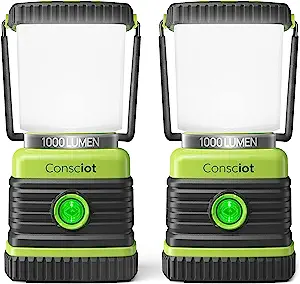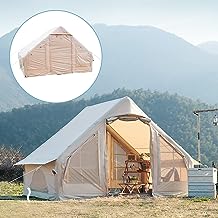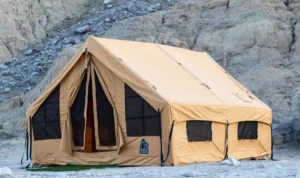Tips for choosing the right location for your inflatable tent
Choosing the right location for your inflatable tent is crucial to ensure a comfortable and enjoyable camping experience. Here are some expert tips that will help you select the perfect spot:
1. Consider the terrain:
When choosing a location for your inflatable tent, it’s important to assess the terrain.
Look for a flat and even surface where you can pitch your tent without any obstructions or rocks. Avoid slopes or uneven ground, as this can affect the stability of your tent and make it uncomfortable to sleep in.
2. Check for natural shelter:
While inflatable tents are generally sturdy, it’s always wise to look for areas with natural shelter such as trees or large rocks that can provide extra protection from strong winds or heavy rain. This will not only enhance your camping experience but also safeguard your tent from potential damage.
3. Assess proximity to water sources:
Access to clean water is essential during camping trips, especially if you plan on cooking or drinking directly from natural sources. Therefore, consider pitching your inflatable tent near a freshwater stream or lake where you can easily collect water for various purposes.
However, be cautious of camping too close to bodies of water prone to flooding during heavy rainfall.
4. Take note of sun exposure:
Pay attention to the direction in which your chosen location faces and how sunlight will hit it throughout the day.
While some campers prefer waking up with the sunrise streaming into their tents, others may want shade during morning hours or seek relief from intense afternoon heat. Take this into account when selecting a suitable spot, particularly if you have specific preferences regarding light levels and temperature inside your tent.
5. Respect local regulations:
Whether you’re camping in designated campsites or venturing into more remote areas, it is vital to respect local regulations and restrictions concerning where you can pitch your inflatable tent. Some parks may have specific rules about where tents are allowed in order to preserve fragile ecosystems or protect wildlife habitats—always adhere to these guidelines so that you can enjoy the great outdoors responsibly.
By carefully considering these tips when choosing the right location for your inflatable tent, you’ll set yourself up for a successful and comfortable camping experience. Remember, finding an optimal spot that offers stability, protection, access to water, and complies with local regulations is key to ensuring an enjoyable adventure amidst nature’s splendor.
Tips for staying warm at night in an inflatable tent
When embarking on a camping adventure with an inflatable tent, it is crucial to ensure you stay warm and cozy during the chilly nights. Here are some invaluable tips to help you achieve a comfortable sleep in your inflatable abode. First and foremost, invest in high-quality insulation gear.
One excellent option is a thermal sleeping bag designed explicitly for cold-weather camping. Look for a bag with a temperature rating suitable for the expected conditions of your camping trip.

Additionally, consider using a sleeping pad or air mattress underneath your sleeping bag to provide an extra layer of insulation against the cold ground. This will prevent the cold from seeping through and stealing away your precious body heat.
Secondly, be cautious about ventilation in your inflatable tent. While it may be tempting to seal all openings tightly to keep warmth inside, proper airflow is essential for reducing condensation buildup and maintaining comfortable temperatures within the tent.
Opt for tents that offer adjustable ventilation options such as mesh windows or vents that can be opened partially or fully depending on the weather conditions. This way, you can regulate airflow while also minimizing drafts that could cool down the interior of the tent excessively.
Additionally, consider utilizing heat sources strategically within your inflatable tent to augment warmth during colder nights. One option is using portable heaters designed specifically for tents; these devices are often equipped with safety features like automatic shut-off mechanisms and carbon monoxide detectors, ensuring both comfort and safety while you sleep.
Alternatively, if electricity or gas-powered heaters are not available or practical, you can rely on more traditional methods such as hot water bottles wrapped in towels or heated blankets designed for outdoor use. By following these tips carefully, you’ll create a snug haven within your inflatable tent even when facing chilly temperatures outdoors – providing you with a restful night’s sleep during your camping escapades.
Tips for packing your inflatable tent for easy transportation
When it comes to packing your inflatable tent for easy transportation, there are several tips and tricks that can ensure a hassle-free camping experience. Firstly, it is crucial to deflate the tent properly before packing it away.
Begin by unzipping all the doors and windows of the tent to release any trapped air. Next, carefully open the valves and gently push down on the walls of the tent to expel as much air as possible.
It is advisable to start from one end of the tent and work your way towards the other, ensuring that all sections are deflated evenly. Once your inflatable tent is completely deflated, it’s time to fold and pack it.
Begin by folding any protruding poles or frames neatly against the fabric of the tent. This will help prevent any damage during transportation.
Then, starting from one end of the tent, fold it accordion-style in a manner that aligns with its original creases or seams. Take care not to rush this process as hasty folding may result in uneven folds or wrinkles in the fabric.
To further protect your inflatable tent during transportation, consider using a waterproof bag or storage container specifically designed for camping gear. These bags are often made from durable materials and provide an extra layer of protection against moisture, dust, and other potential hazards.

Before placing your folded inflatable tent into its designated storage bag or container, be sure to remove any debris such as twigs or leaves that may have accumulated during use. Additionally, when packing your inflatable tent along with other camping essentials such as sleeping bags or cooking equipment, be mindful of weight distribution within your backpack or vehicle.
Placing heavier items closer to where they will be carried helps maintain balance and stability during transit. By following these packing tips for transporting your inflatable tent effectively, you can ensure its longevity while also guaranteeing a more convenient camping experience without unnecessary complications upon arrival at your desired destination
A list of must-have camping gear for inflatable tents
When embarking on a camping adventure with an inflatable tent, it is crucial to have the right gear to ensure a comfortable and enjoyable experience. Here is a comprehensive list of must-have camping gear specifically tailored for inflatable tents.
First and foremost, investing in high-quality sleeping pads or air mattresses is essential for a good night’s sleep. Unlike traditional tents that provide some insulation from the ground, inflatable tents lack this feature.
Therefore, using sleeping pads or air mattresses will provide much-needed comfort and insulation against the cold ground. Opt for thick, insulated sleeping pads or self-inflating air mattresses that offer both cushioning support and insulation.
Next on the list are sturdy camping chairs and tables. While some may consider these items as non-essential luxuries, they can significantly enhance your camping experience.
Having a comfortable place to sit and relax after a long day of outdoor activities can make all the difference. Look for lightweight yet durable camping chairs made from materials such as aluminum, which offer both portability and stability.
Similarly, collapsible tables are convenient for dining or playing games during your trip. Moreover, lighting equipment is crucial to ensure safety and convenience at your campsite during nighttime hours.
An LED lantern is an excellent choice as it provides bright illumination while being energy-efficient and long-lasting. Additionally, headlamps are invaluable tools that allow you to have hands-free lighting whenever needed – whether it’s finding your way around the campsite at night or reading inside your tent.

Inflatable tents generally have fewer storage compartments compared to traditional tents; therefore, investing in reliable storage solutions is important. Look for hanging organizers that can be easily attached inside the tent to store small items such as keys, phones, flashlights, or toiletries conveniently within reach while maximizing interior space utilization.
Don’t forget about cooking equipment! A portable stove with fuel canisters allows you to prepare warm meals even in remote locations without access to firewood.
Choose a compact, lightweight stove that is easy to assemble and disassemble for effortless transportation. Additionally, pack cooking utensils, pots, and pans that are specifically designed for camping to make cooking a breeze.
By ensuring you have these essential camping gear items, you can elevate your inflatable tent camping experience to new heights of comfort and convenience. Remember to select high-quality products that align with the specific requirements of your trip and always prioritize safety and durability when making your purchasing decisions.
To Review
Camping with an inflatable tent can be a truly rewarding experience if done right. By following the tips outlined in this article, you can ensure a comfortable, enjoyable, and hassle-free camping trip. Choosing the right location for your inflatable tent is crucial to maximize your camping experience.
Whether you prefer a serene lakeside campsite or a secluded spot amidst nature’s beauty, take the time to research and find the perfect location that suits your preferences. Staying warm at night is essential when camping in an inflatable tent.
Invest in quality sleeping bags that provide adequate insulation and consider using sleeping pad or mattress to create a barrier between you and the cold ground. Moreover, wearing thermal layers and bringing extra blankets will help keep you cozy during chilly nights.
It’s also important to remember not to overheat your tent by sealing it completely shut; allowing proper ventilation will prevent condensation buildup inside. When it comes to packing your inflatable tent for transportation, be organized and efficient.
Ensure that all components are properly deflated and tightly packed away in their respective bags. This will save space and make it easier to transport from one campsite to another without any damage or loss of parts.
Additionally, taking the time to clean and dry your tent before packing it up will prolong its lifespan by preventing mold or mildew growth. As for must-have camping gear for inflatable tents, invest in reliable air pumps that are compatible with your specific model of tent.
Quality stakes and guylines are also essential for stability during windy conditions. Consider purchasing a repair kit as well so that any minor damages can be fixed promptly on-site.
Embarking on a camping trip with an inflatable tent opens up new opportunities to explore nature while experiencing comfort at its finest. By choosing the right location, staying warm at night with proper gear, efficiently packing your equipment, and having essential items on hand, you’ll be equipped for an incredible adventure under the stars.
So go forth, embrace the wilderness, and create memories that will last a lifetime. Happy camping!


